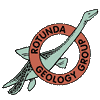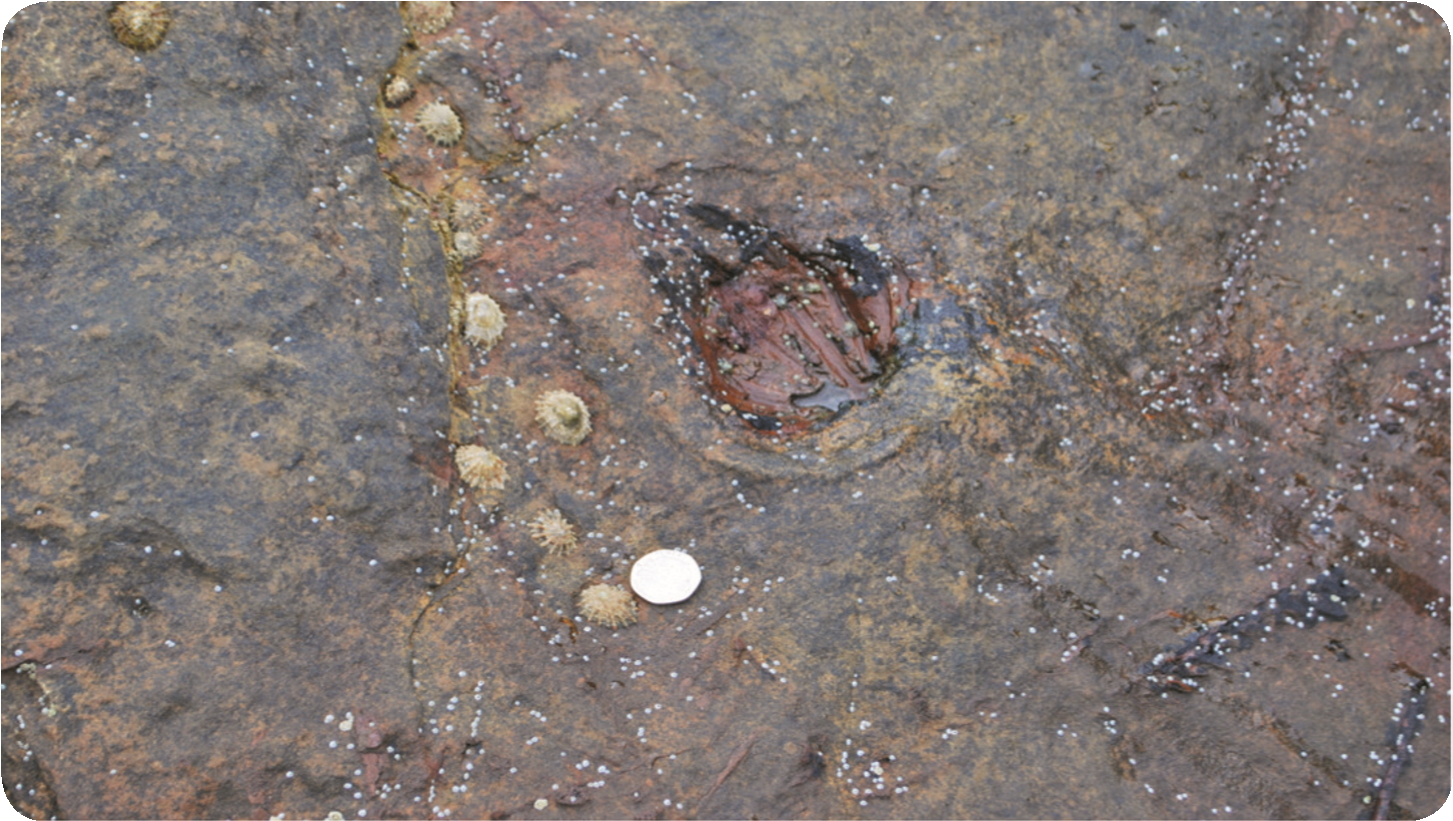12th August 2017
This trip was led by Steve Livera. The party met at the boat launching ramp in Ruswick Bay (GR NZ 810160). The weather threatened heavy downpours that fortunately held off until lunchtime. From Runswick Bay the party set off northward traversing the seaweed covered wave cut platform with extreme care and crossed a small boulder field until reaching the comparatively easy passage provided by the fisherman’s path that gives access to Topman Steel.
The junction between the Bituminous Shale and Jet Rock units of the Mulgrave Shale Member of the Whitby Mudstone Formation is well exposed at Topman Steel and the party was able to examine the distinctive argillaceous limestones of the Top Jet Dogger and Millstones close at hand. The latter, which form giant lenticular concretions up to 4.5 m in diameter and 0.5 metres thick, are one of the diagnostic beds in the ‘concretion stratigraphy’ described by Howarth in his seminal 1962 paper on the ‘Jet Rock and Alum Shale Series’. Steve Livera pointed out other distinctive concretion horizons, the Curling Stones and Whalestones, although latter were only seen through the breaking waves. The wave-cut platform also provides excellent clean surfaces allowing close examination of bedding laminations in the mudstones and distinctive layers of pyrite crystals that are characteristic of the Jet Rock. These mudstones were deposited in euxinic seabed conditions which supported little or no infauna and therefore show no bioturbation.
Steve Livera gave an account of the latest theories explaining the origins of these conditions which may involve a complex interaction of volcanic activity related to the eruption of Karoo flood basalts, carbon-fed global warming, and the melting of methane hydrates.
After a brief examination of the overlying Bituminous Shales exposed on the scar and in the cliff face below Wrack Hills the party made its way back towards Runswick Bay stopping at the remains of the stone footings of the harbour at Wrack Hills for lunch. Steve Livera described the history of extractive mining industry at Wrack Hills during the ninetieth century. In the 1850s an ironstone mining venture was set up to exploit the Cleveland Ironstone Formation (below sea level) and the top seam (Dogger Formation). Calcining kilns and furnaces were built and iron production commenced before a catastrophic land slip in 1858 effectively destroyed the site. The slip surfaces and fill are well exposed near to the old ironstone exporting jetty.
After lunch, the party examined fallen sandstone blocks of the Saltwick Formation which contain well preserved plant fossils. These included fruiting bodies of Weltrichia and fronds and leaves of Zamites.
A slight misty drizzle after lunch had affected the party and with grey skies overhead upon returning to Runswick Bay village it was no surprise when a few decided to head for the tea room. The remaining stalwart members and guests strode gamely eastwards across the sandy beach for more geology. The jet adits at Hob Holes were seen and it was pointed out that along the path up to the cliff top from here (that ends close to the old Kettleness Ironstone Mine) there is much evidence of more jet extraction workings. The view east towards Kettleness Point was used to illustrate the main stratigraphic units. The party then worked their way onto the top of the Cleveland Ironstone Formation, marked by a spectacular wave cut platform formed of knobbly red partly coalesced ironstone nodules. Just beforehand a set of neat ca. 30 inch diameter vertical ‘cores’ in the overlying shales were inspected. Some have a shale plug remaining in the middle but most formed neat holes. Local rumour has it that these were drilled by Nyrex in the 1980s as part of their research in support of nuclear waste disposal. The party then walked across to the lower parts of the Mulgrave Shale Member and inspected the fossiliferous horizons that are well exposed at the base of the cliff.




